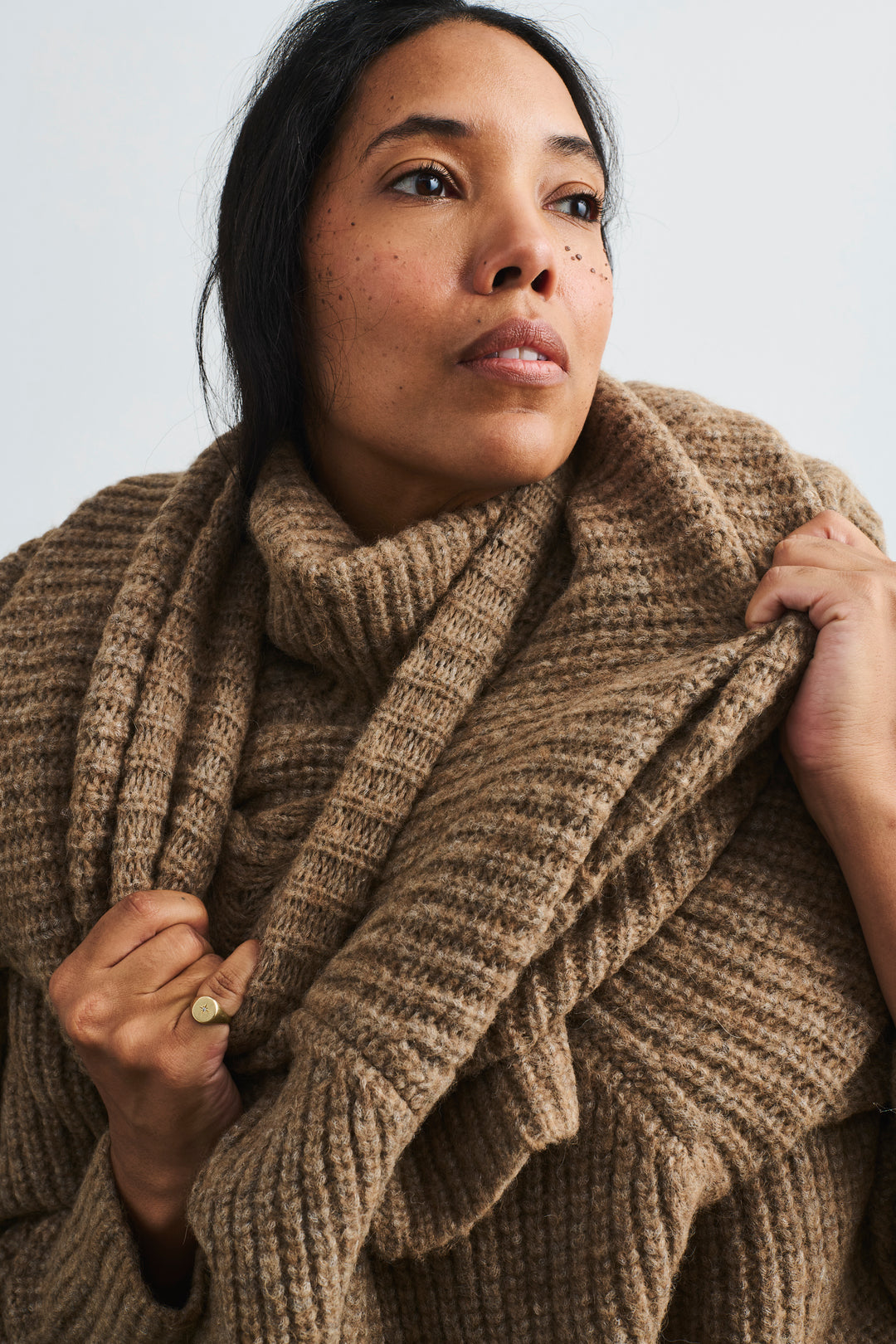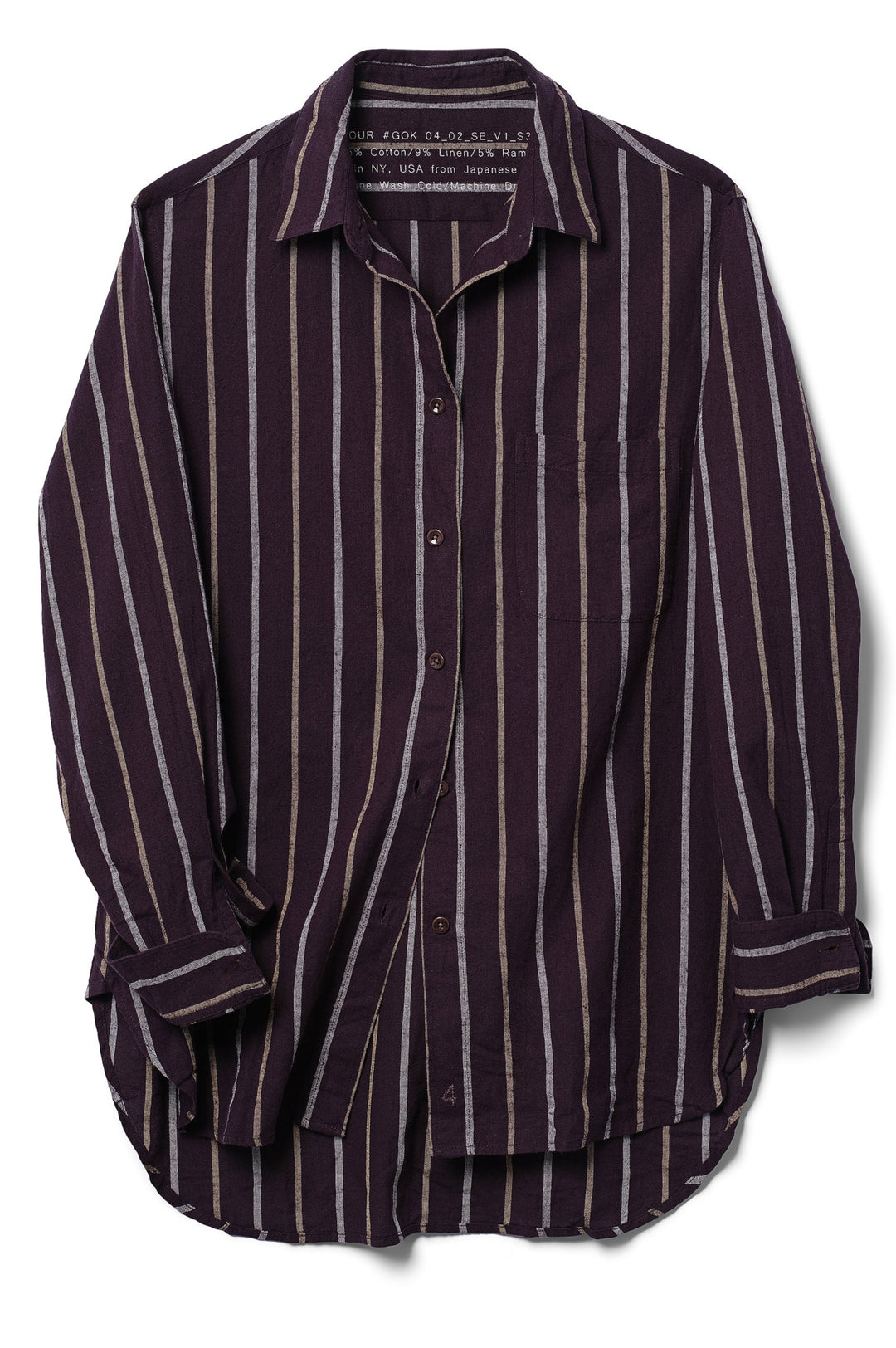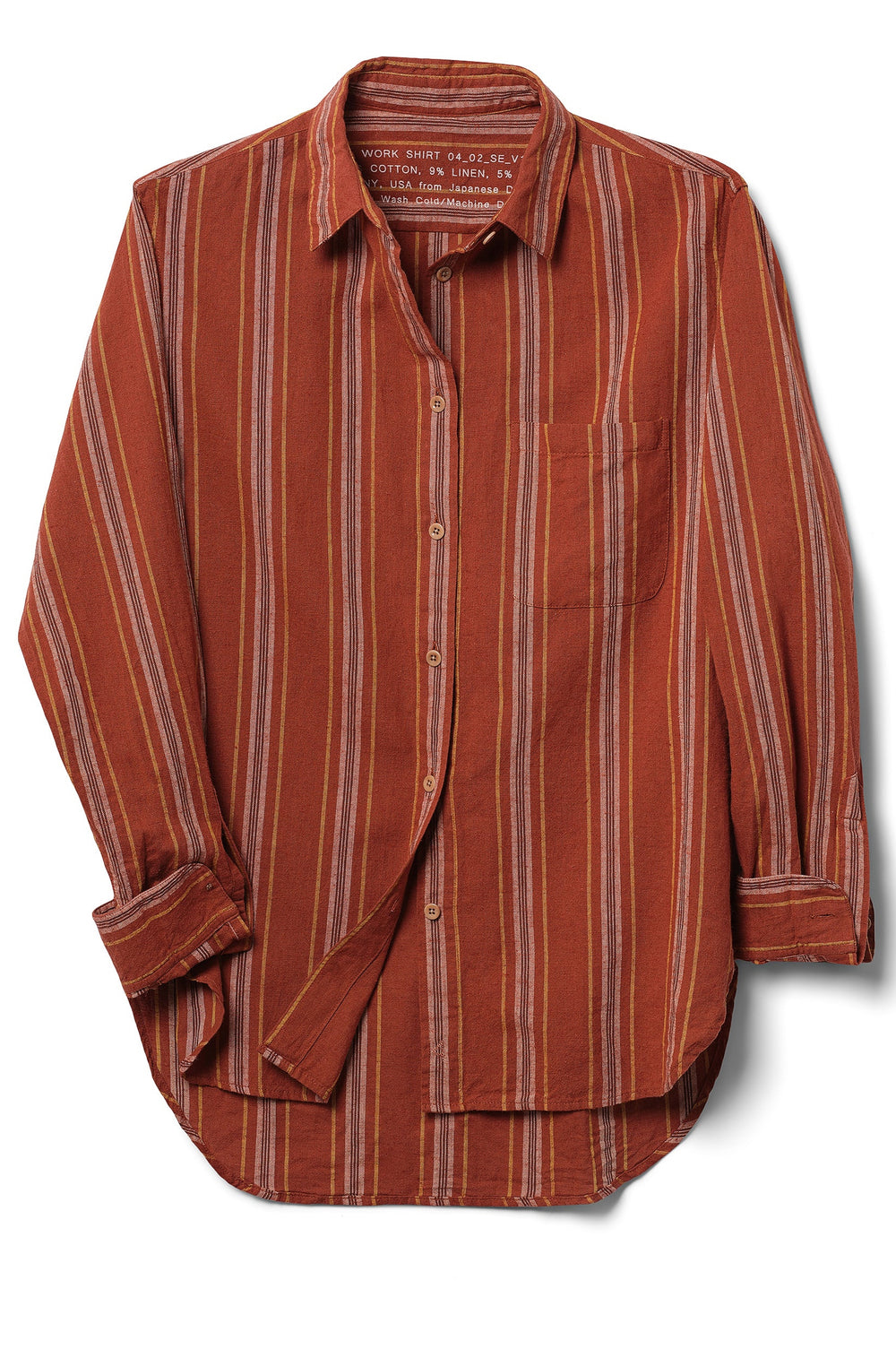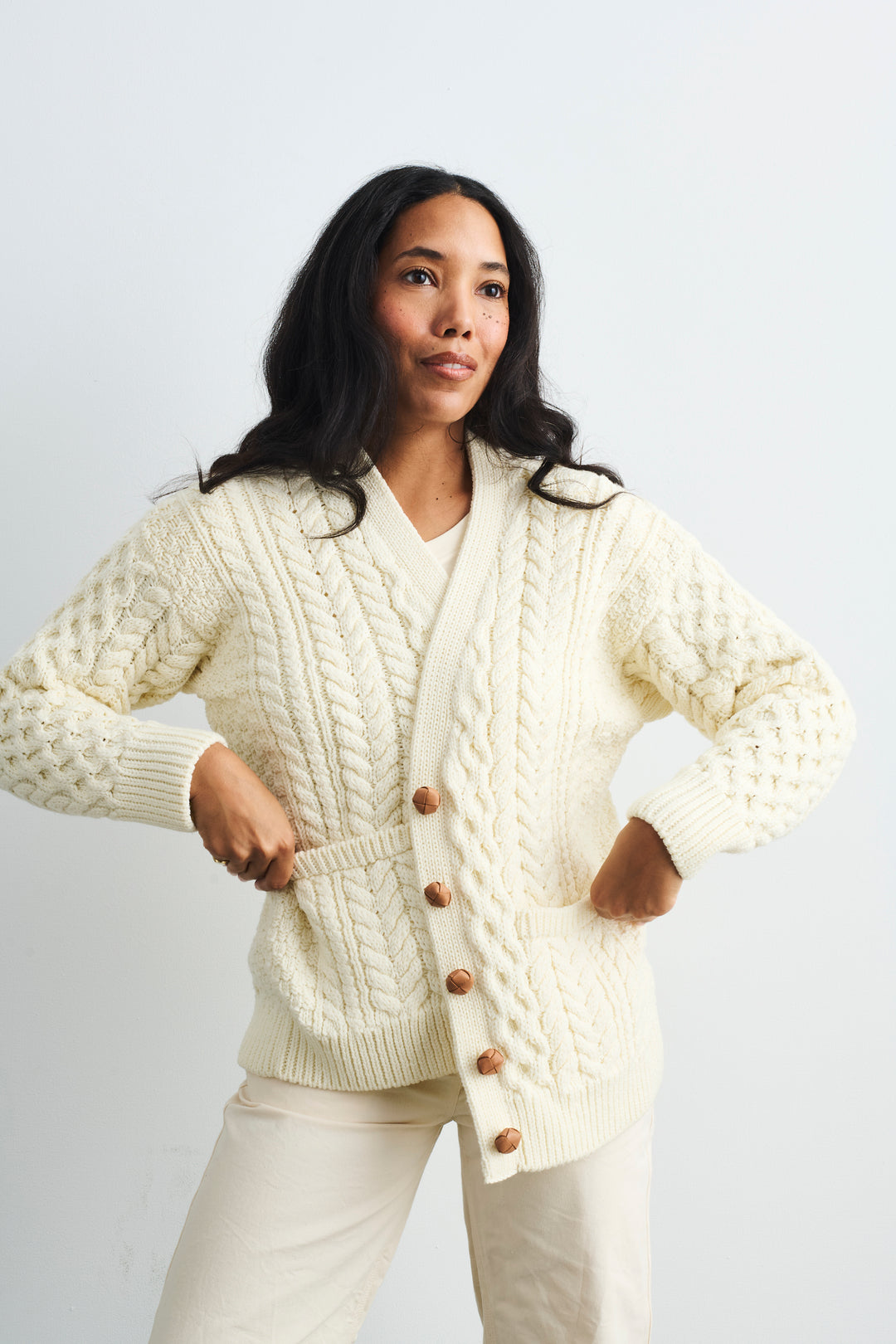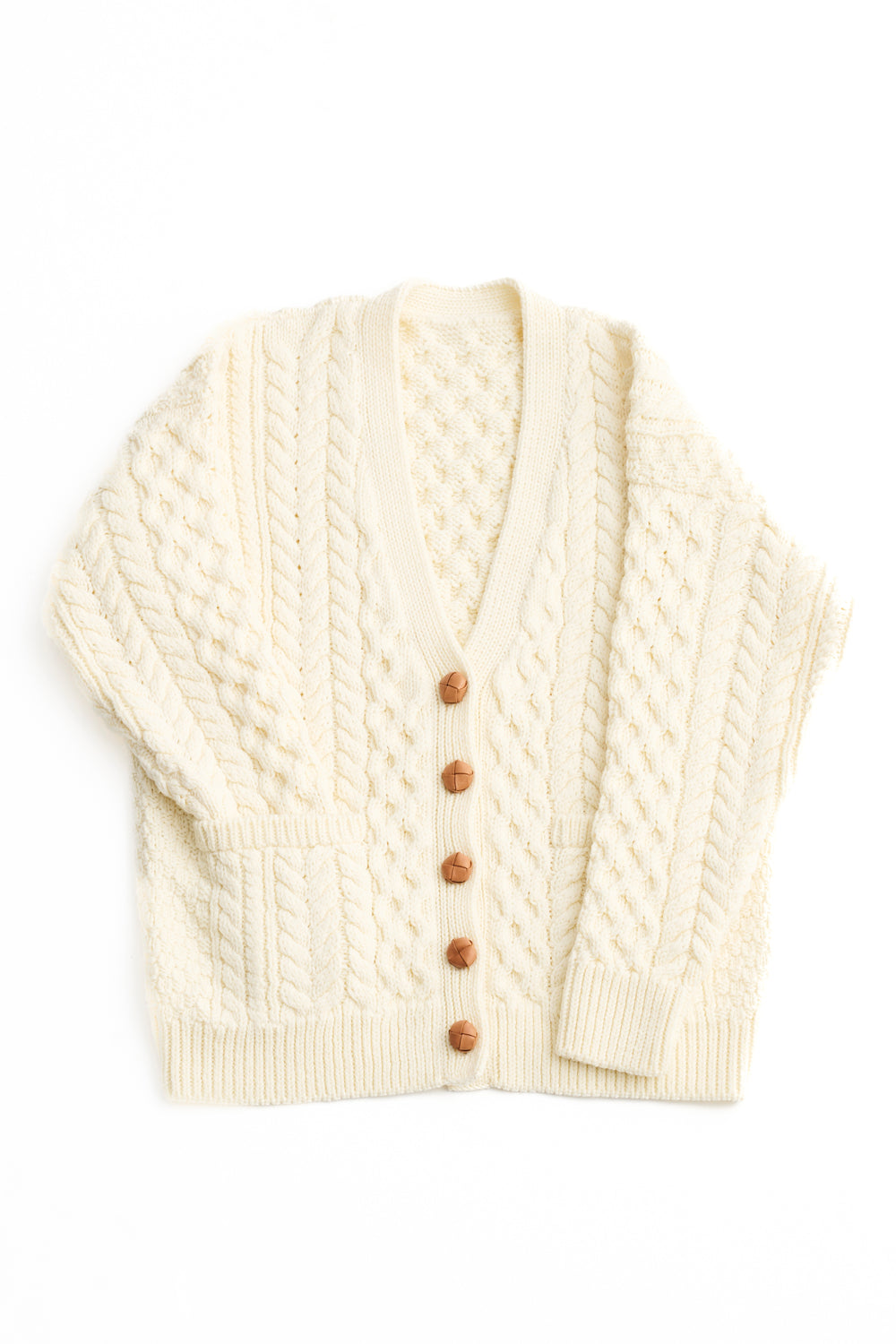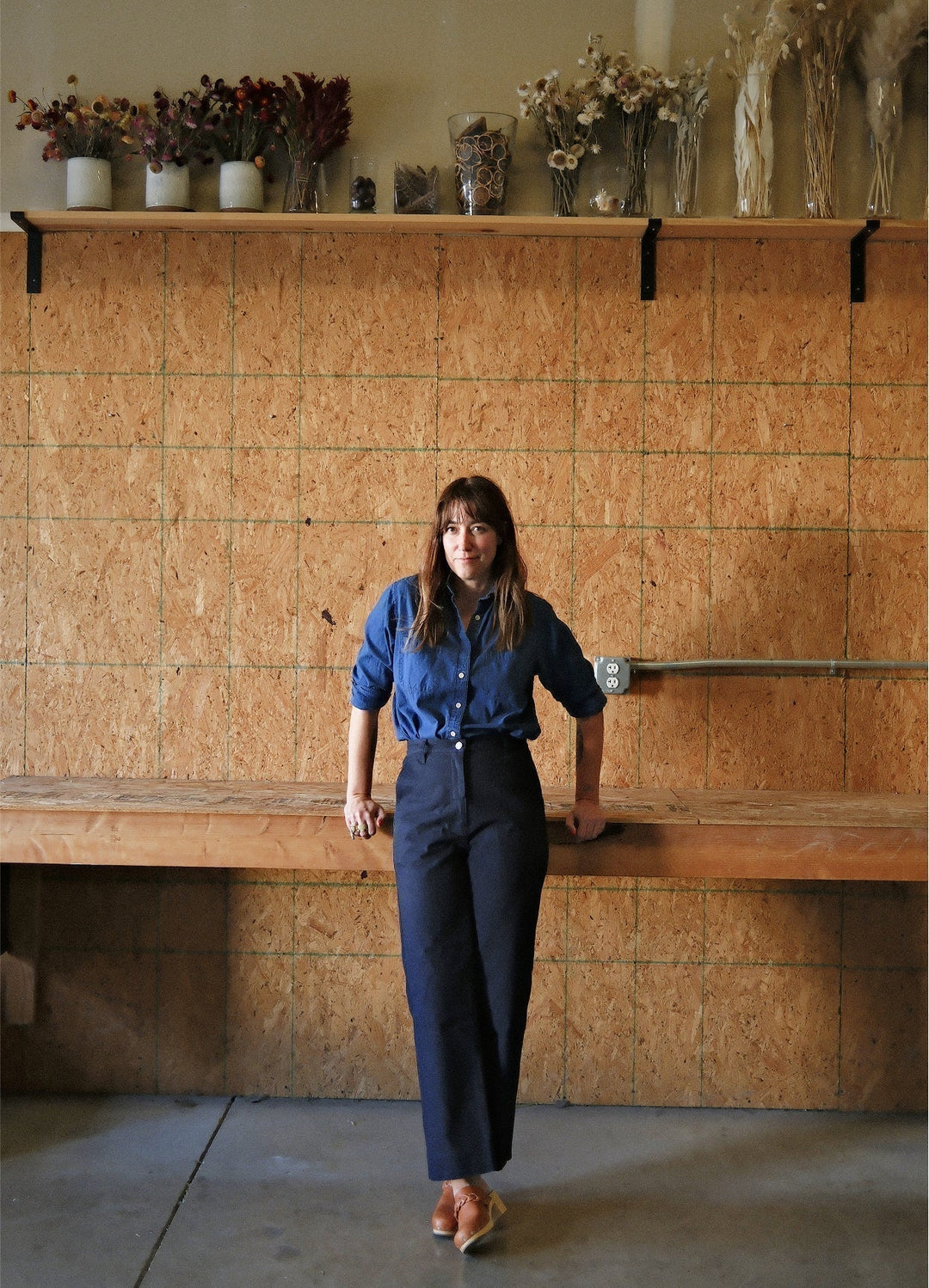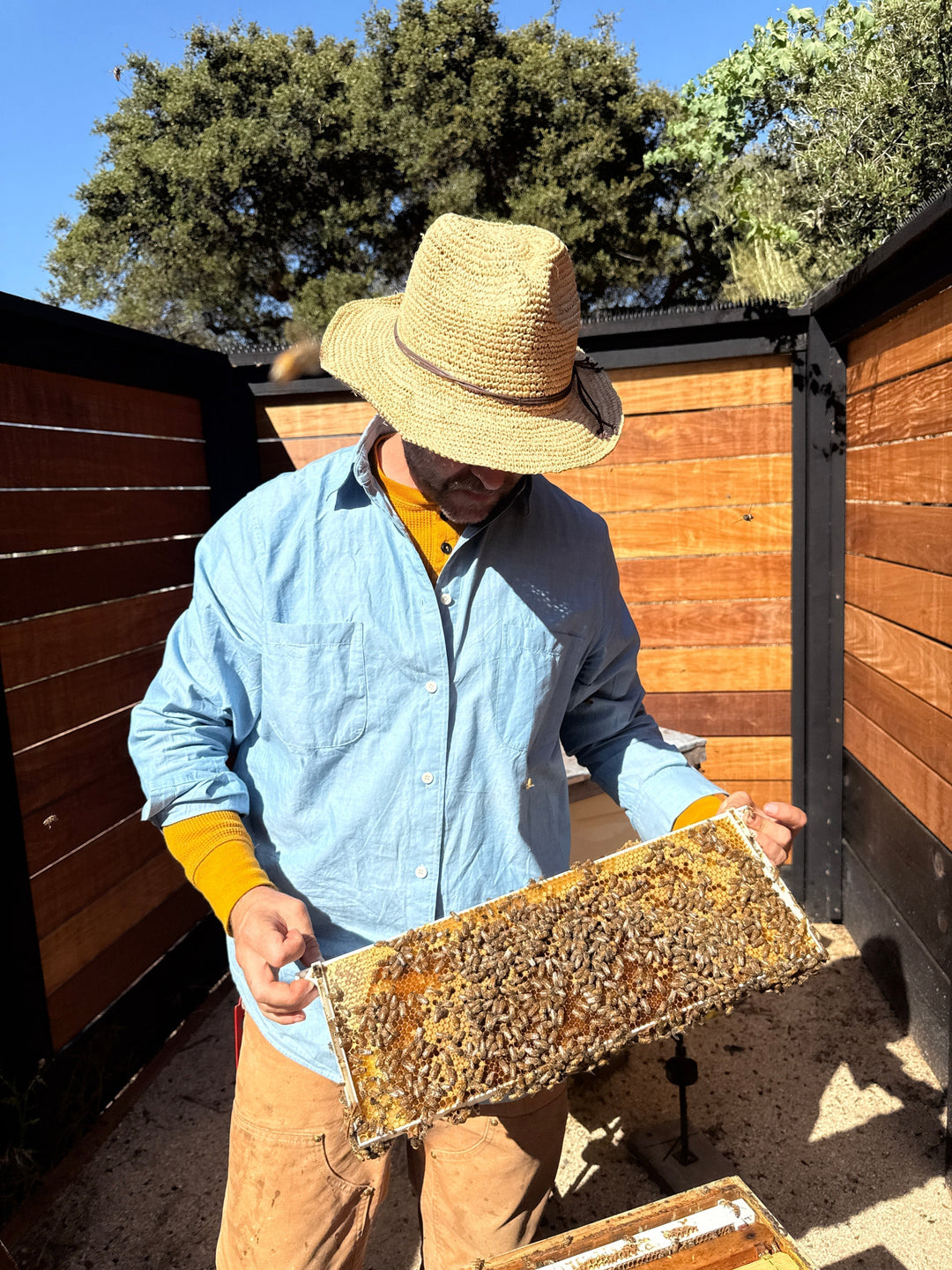Celebrities2Us:Green Matters
Our beloved BFT gets a refresh with local botanical dyers, Green Matters. Every year since we launched the undyed BFT in 2020, we've added two limited-edition botanical colors. These gorgeous hues have been hand-dyed in Peru with a family local to our manufacturing partners, Art Atlas. Due to the nature of hand dying and botanical dyes about 20% of the shirts are unsellable with striations in color. We've been storing them until we could find a reasonable solution. Working closely with the founder of Green Matters, Winona Quigley, we found two recipes that would rescue three of our colors from the recycling bin. And for our Collectors, lucky you. The two new, limited-edition colors are a sparkling ruby from overdying with Madder Root and a lustrous sapphire from dippping our existing indigo 8 more times!
We asked Winona a few questions to get more of a back story on Green Matters.

FOUR: We see from your website that you've just reached your 9 year anniversary. Congratulations! We're only on year 5 and we know it can be so hard to start a business, especially a sustainable one :) Tell us about how Green Matters came to be?
WINONA: I founded Green Matters as a response to the environmental impact of the fashion industry. It wasn't easy! I had been working in the fashion industry in New York, and moved back to my mom's house in PA to start the dyehouse out of her back yard. The first small projects we did were in an outdoor studio, dyed by hand in beer kettles. In 2017 we moved into a single bay of a converted dairy barn, and after 4 expansions we are still here. We had to build slowly, as we are self funded. Shortly after moving into the dairy barn, we purchased the first of our dye machines. Our garment dye machines allow us to dye larger batches, which enables us to dye higher volumes with more consistency. The first 7 years of our operation, we only dyed clothing for businesses (like FOUR!) but in 2022 we launched our first retail dye service, allowing individuals to send items into our service to be re-dyed. We believe that not only do brands have the power to make a more sustainable product, but people should have tools and services to mend their garments, keeping them in rotation (and out of landfills!) longer.

We LOVE your community Indigo vat and your monthly colors. We have used it for our kids stained clothes and our absurd collection of antique white linens that we never used because they were white :) What drew you to natural dyes?
It was initially important to me to find an alternative to synthetic dyes, which generate up to 9 trillion gallons of toxic waste each year. But as I started to research plant color, the living color left behind on the textiles by the plants kept me coming back to the dye pot.

Tell us more about the community dye vat? What colors can people choose this month?
Our Dyelot of the Month is a service that encourages individuals to send their natural fiber garments and textiles to our dyehouse to be processed in 3 rotating colors each month. We are really excited for August, our colors are Eggplant (deep purple), Pinot (deep red), and Salted Caramel (a warm deep tan). This service is great for covering stains, keeping your existing wardrobe up to date with color trends (we do a lot of research for this!) or just keeping things fresh without purchasing anything new. Our Community Indigo Vat is also an option, which offers 2 shades of blue year round.



Maybe you can tell us something about Madder & Indigo since we're using them to save our garments?
Indigo is entirely processed by hand. The garment is soaked, then hand dipped into our organic indigo vat. When it first comes out of the vat, it is bright green, and slowly turns blue as it oxidizes. Our team rinses the garment by hand to help the oxidation process, then dips the garment again. We do this until the desired depth of shade is achieved (in this case, 8 times!). Madder is dyed using the roots of the madder plant, which are bright red when dug out of the soil. These roots are harvested, chopped, ground, then cooked to extract the rich red color. This is added to our dye machines to give the shirts from this collection a deep red color.




Follow @greenmattersnaturaldyeco
Visit their site and send your stuff for the community dye lots!
You can also learn to make paints and plant a garden for dyeing. 🌸🌺🌿🌼
Get your Botanical BFT here.




